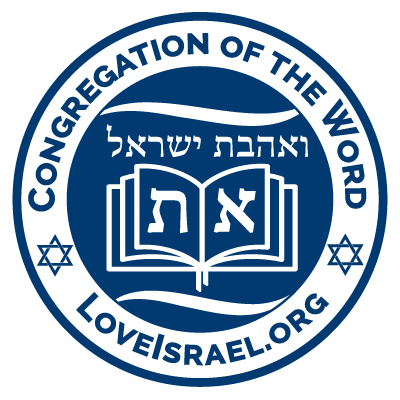Torah Portion: Emor (Say)
Torah Reading: Leviticus 21:1-24:23
Prophetic Reading: Ezekiel 44:15-31
“The Crucifixion of Messiah”
At the end of this week’s Torah portion one reads about the administration of the death penalty according to Torah Law. Most know that the Torah demanded that the death penalty be administered by stoning. It was the Romans who utilized crucifixion for the
worst offenders as a way to strongly discourage people from going against the Roman Empire. The Jewish leadership, i.e. government was called the Sanhedrin.
They were the ones who arrested Yeshua and condemned Him to death. What was Yeshua guilty of? The answer blasphemy— He said He was the Son of God. Of course Yeshua is the Son of God, fully Divine and without sin. Nevertheless, the Sanhedrin ruled that it was
blasphemy for Him to proclaim to be the Messiah (See Mk. 14:61-64).
A puzzling question is why did not the Sanhedrin carry out the death penalty themselves, rather than turning Yeshua over to the Romans? Many would answer that HaShem used this to show that both Jew and Gentile are guilty of Messiah’s death, for
all have sinned, and come short of the glory of God (See Romans 3:23). Others would answer and say that the Torah law calling for stoning could result not only in Yeshua’s death, but would also likely cause broken bones which would be a violation of Prophecy
(See Psalm 34:21 {verse 20 in English}, Exodus 12:46, and Numbers 9:12). Those who assert that the Sanhedrin could not carry out a death sentence without Rome’s approval are simply incorrect (See Acts 7 and the death of Stephen). Most would refer to
Galatians 3:13, which states that Messiah was crucified because He redeemed the believer from the curse of the Law, for Deuteronomy 21:23 states that
“Accursed is the one hung on the tree”.
This is true, but what one needs to know is that although Torah law forbids crucifixion; it needs to be pointed out that after stoning one to death, the body was indeed hung on the tree to shame the one for his sin.
In studying this week’s Parashah I read at the end of the Torah portion, “And Moses spoke to the Children of Israel, and when they bring the one who cursed outside the camp they shall stone him (with) a stone and the Children of Israel did just as HaShem commanded Moses.” Leviticus 24:23
I read this verse and saw that Rashi noted that one needed to also read Deuteronomy 21:22-23 to understand how the death sentence was fully carried out.
“And for it shall be with a sinful man a death sentence and you shall kill and hang him upon the tree. And you shall not allow his corpse to hang upon the tree for you shall surely bury on that day; for cursed of God is the hung one (on the tree) and you shall not contaminate your land which the L-rd your God is giving unto you (as) an inheritance.” Deuteronomy 21:22-23
This means that after one is stoned to death according to the Torah, his dead body is hung on a tree until sundown. This is what Galatians 3:13 cites. So why was Yeshua crucified? Although the crucifixion has much theological significance, one additional
aspect for the crucifixion that relates to why the Sanhedrin wanted Yeshua to die by crucifixion, which was forbidden by Jewish law to be administered to a fellow Jew, was to make a strong statement to other Jewish individuals that they should not cross the rulings and teachings of the Sanhedrin or else a torturous death is what such a person could expect.
In other words, because Yeshua pointed out the corruption and how the leadership’s teaching was not Biblically sound, they had Him crucified to serve as a deterrent to anyone else who was thinking of disagreeing with their rule.
Dr. Baruch Korman – May 17th, 2024
Sign up for our newsletter and stay connected to our ministry. Get first-hand information about Baruch Korman’s latest videos, podcasts, articles and conferences.


Copyright © 2025-2027 LoveIsrael | All Rights Reserved